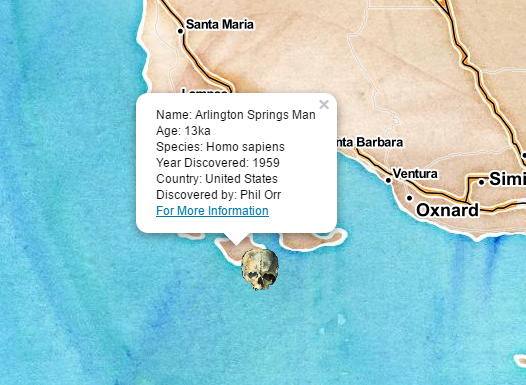Arlington Springs Man is the name given to a set of human remains discovered on an island off the coast of California. In 1959–1960, two femora were excavated by Phil C. Orr, curator of anthropology and paleontology at the Santa Barbara Museum of Natural History, at Arlington Springs on Santa Rosa Island, California. Orr believed the remains were those of a 10,000-year-old man and dubbed them the "Arlington Springs Man". The Arlington Springs Man was later re-examined in 1989 by Orr's successors at the museum, Dr. John R. Johnson and Don Morris. The two came to the initial assessment that the Arlington Springs Man was actually the "Arlington Springs Woman". Radiocarbon dating determined that the remains dated to 13,000 years BP, making the remains potentially the oldest-known human skeleton in North America. The term "Arlington Springs Woman" was used at that time to refer to these remains. After further study, Johnson reversed his gender assessment in 2006, concluding that the remains were more likely those of a man, and the name "Arlington Springs Man" was again the more appropriate name.
